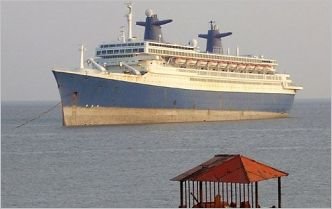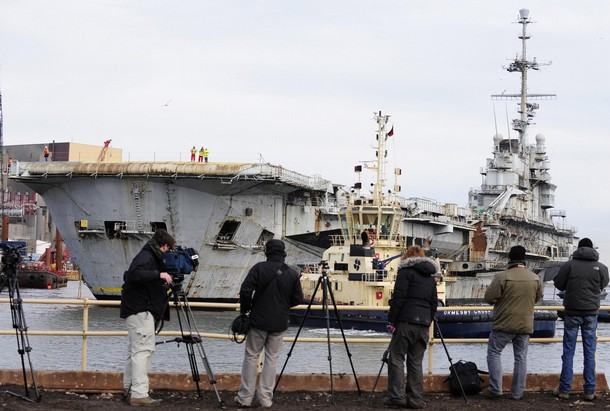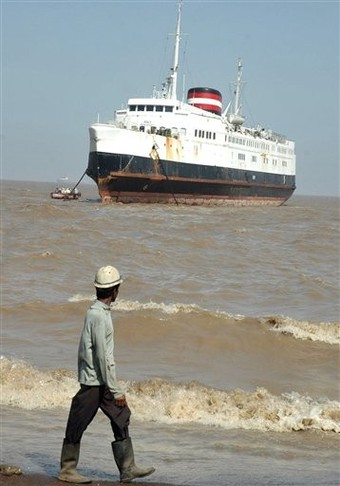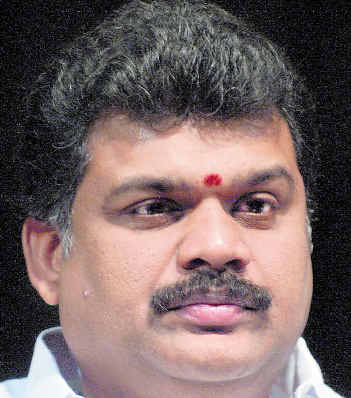Press Release
Fragile Marine Environment in Indian Waters Facing Unprecedented Threat
Mumbai oil spill & chlorine gas leak underlines it
New Delhi/11/8/2010: Absence of a National Shipping Policy to ensure environmental security of Indian waters from ships of all ilk in the face of all too frequent accidents along with oil and chemical spills has become quite stark. Be it in the marine oil and hazardous and noxious substance (HNS) incidents like chlorine gas** leak, dumping of hazardous materials, war materials, end-of life ships or lack of radioactive radiation scanners or the transfer of harmful invasive species and pathogens via ships' ballast water unmindful of Marine Biosafety or the most recent case of collision between two ships which are registered in tax haven countries, it is noteworthy how the global shipping companies can mutilate rule of law in the Indian waters with connivance and indulgence from Marine Environment Protection Committee (MEPC) of UN’s International Maritime Organisation (IMO).
Intriguing silence of likes of G K Vasan, Minister of Shipping and Lakshmi Venkatachalam, Director General of Shipping & ex. officio Additional Secretary to the Govt. of India regarding the incident of the morning of 7th August 2010, container vessel MSC Chitra collision with another Merchant vessel Khailijia 3 near the Mumbai Port Trust merits attention. It is just doing a routine enquiry into the causes of the accident has been ordered. The oil slick has spread over an area of nearly five kilometres around the ship. The MSC Chitra was loaded with more than 2400 containers, 2600 tonnes of oil and 300 tonnes of diesel fuel, and a large number of these loaded containers had already sunk into nearby waters. Some of these containers were reported to include toxic materials such as sodium peroxide. A rather thick oil slick was surrounding the vessel. This ship had sailed to Mumbai from Dubai, and was outbound from Jawaharlal Nehru Port Trust (JNPT) port facility when the collision occurred. The Khalija-3 was apparently towed into port after the incident. Admittedly, later as the listing of the ship (a ship that is leaning on one side or the other) increased, about 250 containers have fallen into the sea.
Survey of the main channel was got carried out by Indian Navy in the early morning of 8th August,.2010. On 9th August, 2010, the Navy started undertaking survey of some containers that have hit the bottom. To facilitate this, all ship movements have been stopped. The vessel has 2662 tons of heavy oil in its various tanks and 245 tons of diesel oil for its own use. Presently, there is an oil spill around the vessel. The Coast Guard and three JNPT tugs are spraying dispersants under the directions of Coast Guard. Some oil has reached ashore in Raigad District of Maharashtra.
While punitive and remedial action is required to prevent such incidents in future, it has been noted that concerned officials have filed maritime charges against the two captains of the vessels. Sources within the industry have expressed consternation at such misplaced charges because it is the pilot/captain of the port and not the captain of ship which is responsible in such matters.
In the present case as a result of the collision the hatch No.2 of MSC Chitra got damaged leading to ingress of water, as a result of which MSC Chitra started listing. Due to the impact of collision, three containers on deck dropped into the sea and about 200 liters of hydraulic oil leaked out.
Even though bow of Khailijia 3 was damaged, this vessel was safely docked at Ballard Pier (BPX) berth of the Mumbai Port Trust. The Mumbai Port Trust contacted the vessel agent and the insurer. The owner and the insurers P&I club, appointed M/s. Smit Salvage, Singapore for assessment and salvaging of the vessel. M/s. Smit secured the compartments and also dropped anchor, securing the vessel from drifting.
Earlier on 14 July 2010, one of the cylinders with liquid chlorine gas, stored at Haji Bunder area, which has been notified by Mumbai Port Trust for handling and storage of hazardous export/import goods developed a leak and chlorine gas dissipated into the atmosphere. “In all 118 persons were affected by the incident and were admitted to
various hospitals.” The Shipping Minister informed the Lok Sabha on 9th August that “no financial assistance has been provided to the affected persons.” Why isn’t there any law to ensure compensation these people for enviro-occupational exposure?
As in the case of the collision of ships, an enquiry was ordered into the causes of the incident, identify lapses and those responsible as well as to suggest remedial measures to ensure that an incident of this type does not recur. It was said that reasons of the leakage would be known after detailed enquiry. Several months have passed but has the Ministry of Shipping bothered to disclose the reasons?
There were strict directions issued to all the Major Ports to dispose off all the hazardous/inflammable cargo lying in port area since long time under section 61 & 62 of Major Port Trust Act, 1963. Has this order been complied with? As of 9th August, 2010, ports like Kolkata Dock System, JNPT, Tuticorin, New Mangalore, Mumbai, Kandla, Chennai hazardous substances like Sodium Aluminate Solution, Brass Ash (Waste Scrap), Metal Scrap slag & Ash of Nickel, Slag & Ash of Chrome, Slag & Ash of Nickel, Low Grade Nickel, Hydroxide & PCB Scrap, Old and used NI/CD, Battery, Waste oil, Methyl Monomer and War materials like empty shells cartages etc.
Notably, efforts have been made to destroy the material with the help of Police/Army /Bomb disposal squad. But no agency is coming forward to destroy the material.
With regard to Mumbai, the Shipping Minister gave vague information to the Lok Sabha saying “Different type of dangerous and Hazardous goods” are lying at Mumbai port from different
dates starting from March 1983 including empty chlorine cylinders. He did not name and specify these dangerous and hazardous goods.
As to “Methyl Monomer” lying at New Mangalore port, it has been stated that its there because of “Inadequate storage space in the factory premises of M/s BASF, Mangalore”, the importer. BASF is the world's largest producer of acrylic monomer. BASF is the largest chemical company in the world and is headquartered in Germany. BASF originally stood for Badische Anilin- und Soda-Fabrik (Baden Aniline and Soda Factory). It has close to 385 production sites worldwide. Its subsidiary, BASF India Limited is headquartered in Mumbai, with manufacturing facilities in Thane, Mangalore. BASF India Limited manufactures and markets expandable polystyrene, tanning agents, leather chemicals and auxiliaries including specialised metal complex dyes, leather dyes, textile chemicals, dispersions and speciality chemicals, acrylic polymers in primary forms and crop protection chemicals. BASF India Limited is also involved in the trading of chemicals including dyestuffs and related textile auxiliaries, and renders technical services to various industries. Is it convincing that such a company has “Inadequate storage space in the factory premises”?. This merits investigation by a high powered government agency.
A High level committee was also constituted to examine the cylinders/packages and advise on the measures to be taken/ methodology to be followed for neutralization of chemicals/gases and ultimate disposal of all the uncleared hazardous cargo lying in the Port. The report is still awaited.
Despite the opposition of human rights, labour and environmental organizations which got endorsed by ship breaking industry of India, Bangladesh and Pakistan, Indian delegation was misled by the Ministry of Shipping into becoming a party to the adoption of IMO’s new convention on ship recycling although its a major step backwards from existing international and national environmental law. Unmindful of the fact that the IMO treaty will not prevent a single toxic ship from being exported and dumped on the beaches of India, Shipping Ministry refused to change its course although existing international law makes it illegal to export toxic waste to developing countries, to disproportionately burden the poor with pollution.
The reply of the Minister of Shipping with regard to “Installation of Radiation Monitor Portals at All Ports”, in Rajya Sabha on July 27, 2010 revealed that the “Government proposes to install Radiation Monitoring Portals (RMP) in all the Major Ports by 2012. At present steel junk imported is visually examined by Customs Department which is empowered to check the import-export cargo. The Radiation Monitor Portals will help prevent smuggling in/out of radio active hazardous materials only.” Visual inspection of such hazardous materials is ridiculous. This and the incidents above illustrate the sorry state of affairs in the Ministry of Shipping that merits immediate and urgent intervention.
For Details: Gopal Krishna, ToxicsWatch Alliance, Mb: 9818089660, E-mail-krishna2777@gmail.com, imowatch.blogspot.com, Web: www.toxicswatch.com
**Chlorine gas becomes more toxic as the pH level of the water drops and it becomes even more toxic when it is combined with other toxic substances such as cyanides, phenols and ammonia.
At different concentrations effects of chlorine on fish and aquatic organisms is different. At 0.006 mg/L, it kills trout fry in two days, recommended maximum for all fish and aquatic lifeat is 0.01mg/L at which it kills Chinook Salmon and Coho Salmon, at 0.01-0.05 mg/L oysters have difficulty pumping water through their bodies, at 0.2 mg/L Maximum Brook and Brown Trout can withstand, at 0.05 mg/L Maximum
amount that can be tolerated by young Pacific Salmon in the ocean, 0.1 MG/L ills most marine plankton, at 0.25 mg/L, only the hardiest fish can survive, 0.37 mg/L maximum fish can tolerate and 1.0 mg/L ills oysters.
On humans, its over-exposures can cause the following health effects:
coughing, labored breathing, sore throat, and potentially fatal lung disorders (chemical pneumonitis and pulmonary edema). Repeated chlorine over-exposures by inhalation can result in emphysema and erosion of teeth. The symptoms associated with specific Chlorine concentrations manifest themselves differently. It causes
irritation of the eyes and mucous membranes and irritation of the throat. Prolonged exposure may result in death. In addition, high concentrations of this gas mixture can cause an oxygen-deficient environment, especially if released in a poorly-ventilated area.
Individuals breathing such an atmosphere may experience symptoms which include headaches, ringing in ears, dizziness, drowsiness, unconsciousness, nausea, vomiting, and depression of all the senses. Under such circumstances of over-exposure, death may occur.
This group tracks the responses of shipping industry towards environmental and occupational health justice, highlights influence of shipping companies from EU, US and Japan etc. on IMO, its Marine Environment Protection Committee and South Asian governments. It is keen to restore beaches in India, Bangladesh and Pakistan to their pristine glory for the coming generations. For more information visit: www.toxicswatch.org
11/08/2010
10/08/2010
Update on Ship Collision near Mumbai Port
In the morning of 07.08.2010, container vessel MSC Chitra collided with another vessel Khailijia 3 near the Mumbai Port Trust (MbPT) area. As a result of this collision the hatch No.2 of MSC Chitra got damaged leading to ingress of water, as a result of which MSC Chitra started listing.
Due to the impact of collision, three containers on deck dropped into the sea and about 200 ltrs of hydraulic oil leaked out.
Immediately, through the Mumbai Port Vessel Traffic Management System (VTMS), two tugs were requisitioned and were rushed to render assistance. 24 crew members of MSC Chitra were evacuated by the crew of the tugs. The Master of the vessel and five crew members were brought on shore at Mumbai, while the two tugs continued to remain stand by.
Even though bow of Khailijia 3 was damaged, this vessel was safely docked at BPX berth of the MbPT. The Director General (Shipping) [DG (S)] and Coast Guard were informed of the incident and relevant notices to mariners and warnings on VHF channel were promulgated to all concerned.
The MbPT contacted the vessel agent and the insurer. The owner and the insurers P&I club, appointed M/s. Smit Salvage, Singapore for assessment and salvaging of the vessel. M/s. Smit secured the compartments and also dropped anchor, securing the vessel from drifting.
Later as the listing of the ship increased, about 250 containers have fallen into the sea.
Survey of the main channel was got carried out by Indian Navy in the early morning of 08.08.2010. The channel was found clear at that time. Limited ship movements were carried during the day. On 09.08.2010, the Navy is undertaking survey of some containers that have hit the bottom. To facilitate this, all ship movements have been stopped.
The floating containers are being cleared with the help of tugs and floating cranes. They will be stored on the JNPT side of the channel. The Mumbai Port Harbour is likely to be cleared of floating containers in next two-three days.
Once the vessel stabilizes and is certified safe to board, the salvagers will board the vessel and remove the fuel from the various tanks into the barges to eliminate threat of pollution.
The vessel has 2662 tons of heavy oil in its various tanks and 245 tons of diesel oil for its own use. Presently, there is an oil spill around the vessel. The Coast Guard and three JNPT tugs are spraying dispersants under the directions of Coast Guard. Some oil has reached ashore in Raigad District.
The Maharashtra Pollution Control Board authorities have been alerted as also the agencies that draw water from Mumbai harbor. The State Disaster Management Authority is meeting today with the concerned agencies. All efforts are being taken by MbPT and JNPT in collaboration with salvagers, Coast Guard, Indian Navy and other authorities to ensure that the situation is normalized at the earliest. The situation is being closely monitored by the Ministry of Shipping.
An enquiry by the DG (Shipping) into the causes of the accident has been ordered and is underway.
The DG (S) has convened meeting of all agencies for monitoring the situation. MoS is also monitoring the situation on-line.
The CoS meeting of Cabinet Secretariat was held on 08.08.2010 and the situation was reviewed. It will meet again on the 10.08.2010.
Survey of the area carried out by the Navy this morning shows 10-12 containers in the channel. Hence shipping movement could not be resumed. Action is being taken to mark the submerged containers whereafter restricted shipping movements can be considered. Action is also being coordinated to tow the submerged as well as floating containers to the barge. Once the containers are removed from the channel, the area will be surveyed by the Chief Hydrographer and on his advice full shipping movements can be commenced.
The Coast Guard is co-ordinating action to contain the oil spill. Salvers will also be asked to assist in this work.
Fishing is not affected as there is general ban till 15th August 2010.
The Salvers will make an assessment tomorrow on the decision to ballast the vessel and turn it upright; otherwise action would have to be taken to debunker the ship by removing the oil into barges.
So far 17 vessels, 9 at JN Port and 8 at Mumbai Port have completed their operations on 8th and 9th August 2010 but could not be sailed out. 15 vessels were scheduled, 9 for JN Port and 6 for Mumbai Port, but could not be berthed.
http://pib.nic.in/release/release.asp?relid=64476
Due to the impact of collision, three containers on deck dropped into the sea and about 200 ltrs of hydraulic oil leaked out.
Immediately, through the Mumbai Port Vessel Traffic Management System (VTMS), two tugs were requisitioned and were rushed to render assistance. 24 crew members of MSC Chitra were evacuated by the crew of the tugs. The Master of the vessel and five crew members were brought on shore at Mumbai, while the two tugs continued to remain stand by.
Even though bow of Khailijia 3 was damaged, this vessel was safely docked at BPX berth of the MbPT. The Director General (Shipping) [DG (S)] and Coast Guard were informed of the incident and relevant notices to mariners and warnings on VHF channel were promulgated to all concerned.
The MbPT contacted the vessel agent and the insurer. The owner and the insurers P&I club, appointed M/s. Smit Salvage, Singapore for assessment and salvaging of the vessel. M/s. Smit secured the compartments and also dropped anchor, securing the vessel from drifting.
Later as the listing of the ship increased, about 250 containers have fallen into the sea.
Survey of the main channel was got carried out by Indian Navy in the early morning of 08.08.2010. The channel was found clear at that time. Limited ship movements were carried during the day. On 09.08.2010, the Navy is undertaking survey of some containers that have hit the bottom. To facilitate this, all ship movements have been stopped.
The floating containers are being cleared with the help of tugs and floating cranes. They will be stored on the JNPT side of the channel. The Mumbai Port Harbour is likely to be cleared of floating containers in next two-three days.
Once the vessel stabilizes and is certified safe to board, the salvagers will board the vessel and remove the fuel from the various tanks into the barges to eliminate threat of pollution.
The vessel has 2662 tons of heavy oil in its various tanks and 245 tons of diesel oil for its own use. Presently, there is an oil spill around the vessel. The Coast Guard and three JNPT tugs are spraying dispersants under the directions of Coast Guard. Some oil has reached ashore in Raigad District.
The Maharashtra Pollution Control Board authorities have been alerted as also the agencies that draw water from Mumbai harbor. The State Disaster Management Authority is meeting today with the concerned agencies. All efforts are being taken by MbPT and JNPT in collaboration with salvagers, Coast Guard, Indian Navy and other authorities to ensure that the situation is normalized at the earliest. The situation is being closely monitored by the Ministry of Shipping.
An enquiry by the DG (Shipping) into the causes of the accident has been ordered and is underway.
The DG (S) has convened meeting of all agencies for monitoring the situation. MoS is also monitoring the situation on-line.
The CoS meeting of Cabinet Secretariat was held on 08.08.2010 and the situation was reviewed. It will meet again on the 10.08.2010.
Survey of the area carried out by the Navy this morning shows 10-12 containers in the channel. Hence shipping movement could not be resumed. Action is being taken to mark the submerged containers whereafter restricted shipping movements can be considered. Action is also being coordinated to tow the submerged as well as floating containers to the barge. Once the containers are removed from the channel, the area will be surveyed by the Chief Hydrographer and on his advice full shipping movements can be commenced.
The Coast Guard is co-ordinating action to contain the oil spill. Salvers will also be asked to assist in this work.
Fishing is not affected as there is general ban till 15th August 2010.
The Salvers will make an assessment tomorrow on the decision to ballast the vessel and turn it upright; otherwise action would have to be taken to debunker the ship by removing the oil into barges.
So far 17 vessels, 9 at JN Port and 8 at Mumbai Port have completed their operations on 8th and 9th August 2010 but could not be sailed out. 15 vessels were scheduled, 9 for JN Port and 6 for Mumbai Port, but could not be berthed.
http://pib.nic.in/release/release.asp?relid=64476
Subscribe to:
Posts (Atom)









